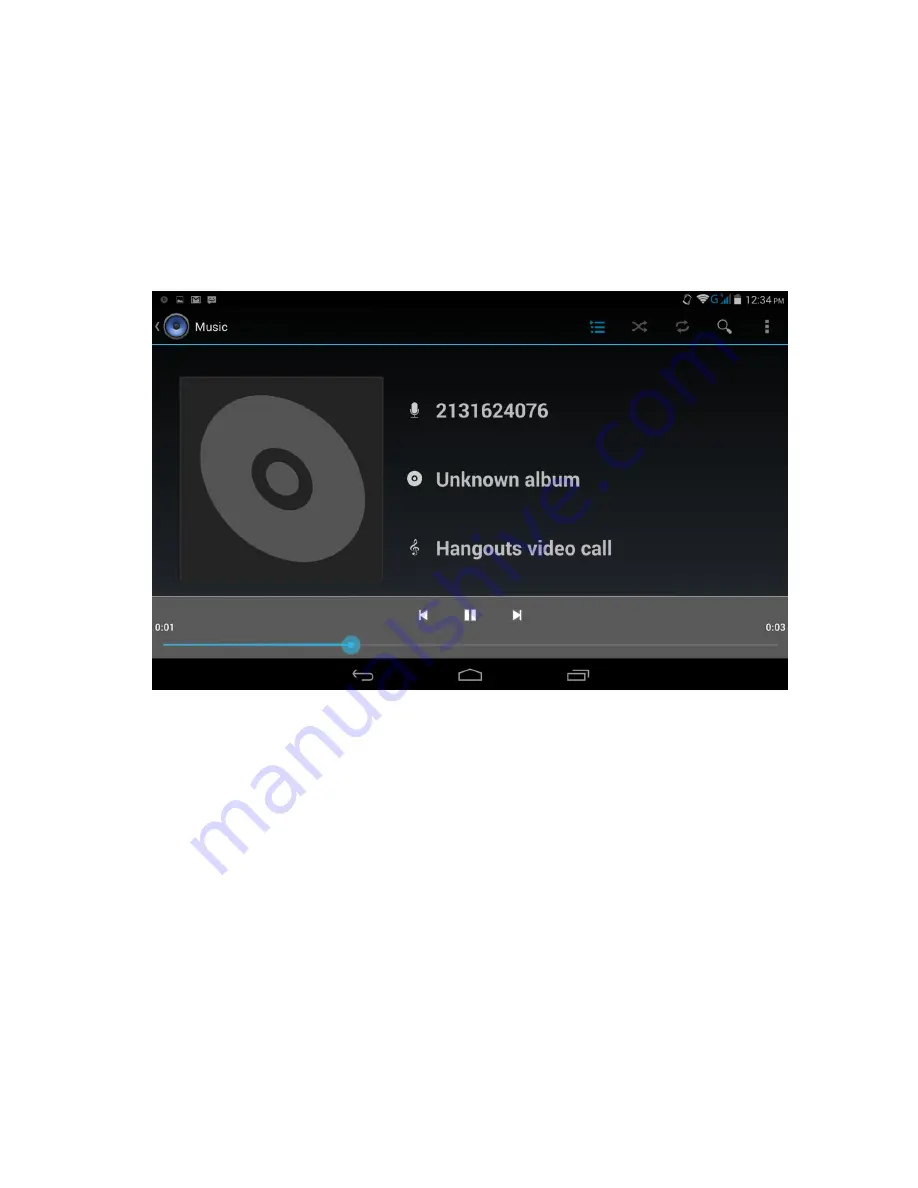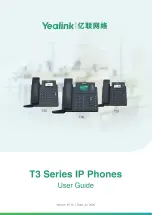
47
4. Open
this folder and copy music files into it. If you want, create folders within “music” to organize your music further. If
you want to use certain music files as phone, notification, or alarm ring tones.
Note:
If you do not want a ringtone to appear in your music Library but you do want it to be available as a ringtone, and
then create the “ringtones”, “notifications”, or “alarms” folder outside your “music” folder.
5. When finished copying, close the USB drive window and unmounts or eject the drive as required by your computer's
operating system. Remove the USB cable from your Slide and computer.
Play back music
At any level in your Library, touch & hold a listing (a song, artist, album, or playlist) to open the context menu. Select Play
to begin play and go to the Playback screen. You can do the following using the Playback screen:
1. Shuffle songs: Shuffle plays songs in random order. Touch to toggle shuffle on and off. When the icon is grey, shuffle
is off.
2. Repeat mode: Touch to step through repeat mode
s: repeat all songs, repeat current song, don‟t repeat (grey icon).
3. Go to any point in song: Swipe fingertip in progress bar to desired point in a song.
4. Playback control: from left to right icons: Go to beginning song, Pause/ resume play and Go to next of song.
If a song is playing while you are on the Library screen, you can switch to the Playback screen quickly by selecting the
lower song bar.
Playlists
You can create as many playlists as you wish. Note that the “Recently added” playlist is a system playlist and cannot be
deleted or renamed. Also, if you make any voice recordings as part of a MMS message, they will be stored automatically
in a playlist called “My recordings”.
















































